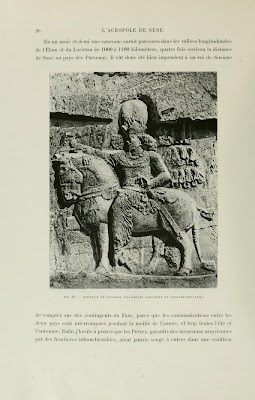The Kushana and the Yueh chih were one and the same. In addition to
North Indian documents the Kushana-Yueh chih association are also
discussed in Dravidian literature. V Kanakasabhai, The Tamils Eighteen
hundred years ago, note that in the Sanskrit literature the Yueh chih were called Yakshas, Pali chroniclers called them Yakkos and Kosars< Kushana.
They allegedely arrived in India during the 2nd century BC. He makes it clear that the Yueh chih/ Kushana as noted on their coins worshipped Siva as seen on the coins of Kanishka. This is why we have a coin of a Kushana king from Taxila, dated to AD 76 that declares that the king was maharaja rajatiraja devaputra Kushana "Great King, King of kings, Son of God, the Kushana".

King Kaniska of the Kushan
The term Tochara has nothing to do with the Yueh
chih, this was a term used to describe the people who took over the Greek Bactrian state, before the Kushana reached the Oxus Valley around 150 BC . There is no reason the Kushana may not have been intimately
familiar with the Kharosthi writing at this time because from 202BC onward Prakrit and Chinese documents were written in Kharosthi.
The Kushana and the Yueh chih were one and the same. In addition to
North Indian documents the Kushana-Yueh chih association are also
discussed in Dravidian literature.V Kanakasabhai, The Tamils Eighteen
hundred years ago note that in the Sanskrit literature the Yueh chih were
called Yakshas, Pali chroniclers called them Yakkos and Kosars< Kushana. They allegedely arrived in India during the 2nd century BC. He makes it clear that the Yueh chih/ Kushana as noted on their coins worshipped Siva as seen on the coins of Kanishka.This is why we have a coin of a Kushana king from Taxila, dated to AD 76 that declares that the king was maharaja rajatiraja devaputra Kushana "Great King, King of kings, Son of God, the Kushana".
Some researchers believe that the Ars'i spoke Tocharian A, while
Tocharian B was the "Kucha language" may have been spoken by the Kushana people. I don't know where you read that the speakers of Tocharian A were called Ars'i. This names have nothing to do with ethnic groups, they refer to the cities where Tocharian text were found:
Tocharian A documents were found around Qarashar and Turfan, thusly these text are also referred to as Turfanian or East Tocharian; Tocharian B documents were found near the town of Kucha, thusly they are sometimes called Kuchean or West Tocharian.
Kanishka Casket

Linguist use the term Tochari to refer to these people, because they were given this title in Turkic manuscripts . They called themselves Kushana.
The observable evidence make it clear that the terms used to label the Tocharian dialects are not ethnonyms, they are terms used to denote where the Tocharian records were found. The use of the term Ars'i does not relate to the Kushana people. The terms: Asii, Pasiani, Tochari and Sacarauli, refer to the nomads that took away Bactria from the Greeks.
These nomads came from the Iaxartes River that adjoins that of Sacae and the Sogdiani .The Kushana people took over Bactria much later. It is a mistake to believe that Ars'i and Kucha were ethnonyms is under-standable given your lack of knowledge about Tocharian. And I will agree that there were a number of different languages spoken by people who
wrote material in Tocharian. It is for this reason that I have maintained
throughout my published works on Tocharian, that this was a trade language. This language was used by the Central Asians as a
lingua franca and trade language due to the numerous ethnic groups which formerly lived in central Asia". Kharosthi was long used to write in Central Asia. It was even used by the Greeks. The use of the Kharosthi writing system in Central Asia and India, would place this writing contemporaneous with the tradition, recorded by the Classical writers of Indians settling among the Kushites of Meroitic Empire..
--------------------------------------------------------------------------------









